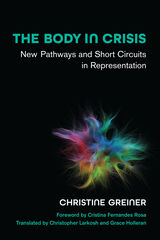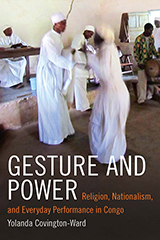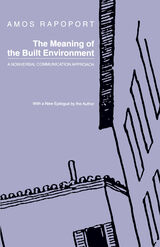3 books about Body language

The Body in Crisis
New Pathways and Short Circuits in Representation
Christine Greiner
University of Michigan Press, 2021
The Body in Crisis introduces the English-speaking world to the work of leading Latin American dance scholar and philosopher of the body, Christine Greiner. The book offers an innovative set of tools with which to examine the role of moving bodies and bodily actions in relation to worldwide concerns, including identity politics, alterity, migration, and belonging. The book places the concept of bodymedium in dialogue with the work of Giorgio Agamben to investigate notions of alterity, and shows how an understanding of the body-environment continuum can shed light on things left unnamed and at the margins. Greiner’s analyses draw from a broad range of theory concerned with the epistemology of the body, including cognitive science, political philosophy, evolutionary biology, and performance studies to illuminate radical experiences that question the limits of the body. Her analysis of the role that bodies play in negotiations of power relations offers an original and unprecedented contribution to the field of dance studies and expands its scope to recognize theoretical models of inquiry developed in the Global South.
[more]

Gesture and Power
Religion, Nationalism, and Everyday Performance in Congo
Yolanda Covington-Ward
Duke University Press, 2016
In Gesture and Power Yolanda Covington-Ward examines the everyday embodied practices and performances of the BisiKongo people of the Lower Congo to show how their gestures, dances, and spirituality are critical in mobilizing social and political action. Conceiving of the body as the center of analysis, a catalyst for social action, and as a conduit for the social construction of reality, Covington-Ward focuses on specific flash points in the last ninety years of Congo's troubled history, when embodied performance was used to stake political claims, foster dissent, and enforce power. In the 1920s Simon Kimbangu started a Christian prophetic movement based on spirit-induced trembling, which swept through the Lower Congo, subverting Belgian colonial authority. Following independence, dictator Mobutu Sese Seko required citizens to dance and sing nationalist songs daily as a means of maintaining political control. More recently, embodied performance has again stoked reform, as nationalist groups such as Bundu dia Kongo advocate for a return to precolonial religious practices and non-Western gestures such as traditional greetings. In exploring these embodied expressions of Congolese agency, Covington-Ward provides a framework for understanding how embodied practices transmit social values, identities, and cultural history throughout Africa and the diaspora.
[more]

The Meaning of the Built Environment
A Nonverbal Communication Approach
Amos Rapoport
University of Arizona Press, 1990
"Rapoport is concerned with the meanings which buildings, their contents, and their inhabitants convey, and the conclusions which can be drawn therefrom for procedures of architectural design to satisfy the people who will ultimately live in these buildings. . . . A challenging book on a subject that has had insufficient attention in the past." —Man and Environment
"Fills a significant gap: it introduces the notion of environmental meaning so clearly that no reader will doubt the basic premise that the environment holds meaning as part of a cultural system of symbols, and influences our actions and our determinations of social order." —Design Book Review
"This is the second edition of a book first published in 1982. . . . Enthusiastic and inquiring as the reader is brought into the writer's thought processes." —Progress in Human Geography (England)
"It has merits not to be found in any other book in this much-discussed and little understood subject, to wit: it is short, it is simple, and it is useful. It is even, in parts, entertaining....a book which will help architects to do their job better." —Architecture Australia
"Fills a significant gap: it introduces the notion of environmental meaning so clearly that no reader will doubt the basic premise that the environment holds meaning as part of a cultural system of symbols, and influences our actions and our determinations of social order." —Design Book Review
"This is the second edition of a book first published in 1982. . . . Enthusiastic and inquiring as the reader is brought into the writer's thought processes." —Progress in Human Geography (England)
"It has merits not to be found in any other book in this much-discussed and little understood subject, to wit: it is short, it is simple, and it is useful. It is even, in parts, entertaining....a book which will help architects to do their job better." —Architecture Australia
[more]
READERS
Browse our collection.
PUBLISHERS
See BiblioVault's publisher services.
STUDENT SERVICES
Files for college accessibility offices.
UChicago Accessibility Resources
home | accessibility | search | about | contact us
BiblioVault ® 2001 - 2024
The University of Chicago Press









